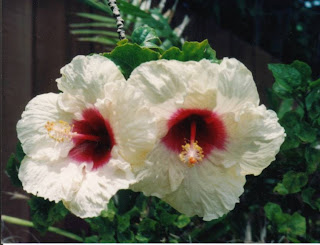 |
| Sands of Kahana koi pond |
Sunday, February 28, 2021
Koi of Gold and Red #SundayHaiku
Friday, February 26, 2021
'AUMAKUA: Cruising on a Sea of Hawaiian Words #AlohaFriday
Known as Hemidactylus frenatus, this common house gecko arrived in Hawai'i from Asia around World War II. Aside from bringing good luck to my home, the gecko eats roaches and mosquitoes. While it takes both a male and a female common gecko to reproduce, the mourning gecko (of which only the female inhabits the islands of Hawaii) clones itself.
In Hawaiian mythology, an 'aumakua is a family god, often a deified ancestor, that takes the form of an animal. If ones chosen 'aumakua appears, it is regarded as a good omen. Many legends tell of an 'aumakua manifesting itself to save a descendant from harm.
Although more popular forms of 'aumakua among Hawaiians are the crow, turtle, shark, owl, and hawk, I've chosen the gecko as my 'aumakua for two reasons. First, because I am a kama'aina (a word describing Hawai'i residents regardless of their racial background, as opposed to kanaka which means a person of Native Hawaiian ancestry), I would not presume to choose a more traditional Hawaiian form. Second, the gecko is considered good luck to have in the home, almost a blessing which is a revered practice in Hawai'i.
Wednesday, February 24, 2021
MOLOKA'I by Alan Brennert: Book Review
 |
| My view of Kalaupapa |
Sunday, February 21, 2021
Pikake in Bloom: Whether Flower or Fowl #SundayHaiku
| Pikake lei |
Friday, February 19, 2021
'Ulalena - Cruising on a Sea of Words #AlohaFriday
Creation and healing are demonstrated in vibrant color and dance. Once seated in the theater, you are welcome to sit back and experience the local legends as music and dance transport you to a bygone era and a uniquely different lifestyle on the winds of 'ulalena.
Friday, February 12, 2021
Haiku & History of Hale Koa and Green Flash
Wednesday, February 10, 2021
PIPE DREAMS by John Madinger: Book Review
How do you write a murder mystery when history has already disclosed the climax? In the case of John Madinger’s Pipe Dreams: The Dark Secret Behind Hawaii’s Most Notorious Crime, this involves a different point-of-view narrator, in depth research that supplies new information, and an eye to well-developed characters acting in good faith on a paradise island overrun with military personnel. Also a challenge offered to the reader regarding the meaning of justice.
Newly-minted Narcotics Officer Jack Mather arrives at police headquarters in Honolulu eager to begin his first assignment – clean out the opium dens in Chinatown. Jack knows better than to stick his nose into the blistering rape case involving a white woman and, allegedly, five local boys. At least, until he doesn’t heed his own warning.Tendrils of smoke drift through Waikiki amidst a nightlife crowded with sailors on weekend leave. Against a backdrop of underworld drug trafficking, and simmering animosity among the Hawaiian population, repeated lies lead to murder. No one is left unscathed, including Jack Mather. After all the chips have fallen and the dead are buried, he must face the consequences of his own actions. Along with the reader, he must decide what price of justice is too high.
John Madinger is the author of Death on Diamond Head, a Kimo Rigg mystery. He also authored Money Laundering: A Guide for Criminal Investigators (not a “how-to” book, but about anti-money laundering). He is a Special Agent- Retired – with the United States Department of the Treasury. His resume also includes Anti-Money Laundering Consultant at United States Department of Justice OPDAT, and work with the Deauville Partnership and US DOJ on stolen asset recovery issues in the Middle East and North Africa - Libya, Tunisia, Egypt, Yemen, and other countries.
Along with publications available on Amazon, John’s latest book, The Opium Kings of Old Hawaii: America's first drug traffickers, will be published by The History Press in the Fall of 2021.
Pipe Dreams on Amazon.com: https://amzn.to/2LpODmT
Read John’s advice to aspiring writers: John Madinger
(Author of Money Laundering) Goodreads
*****
Sunday, February 7, 2021
#SundayHaiku: A Favorite Flower
I had traveled out to Kailua on O'ahu's windward coast and started the short hike to Kailua Beach. These flowers beckoned to me as I walked past a residential home in the neighborhood.
Who could resist snapping such an inviting picture?
Friday, February 5, 2021
Cruising through Hawaiian Words: Ono and 'Opihi
 |
| 'Opihi picking off Maui rocky shore. Rule #1 Never turn your back to the ocean. |
 |
| Yellow and Black 'opihi "on the rocks" |
 |
| http://www.wegoholoholo.com/opihi-poke-bowl-limpet/ |






